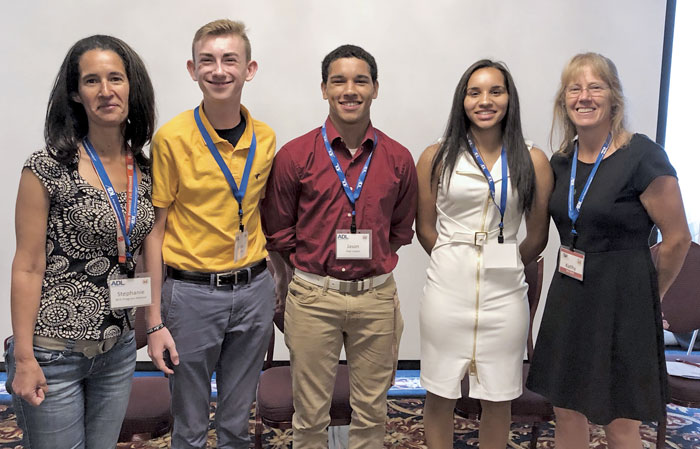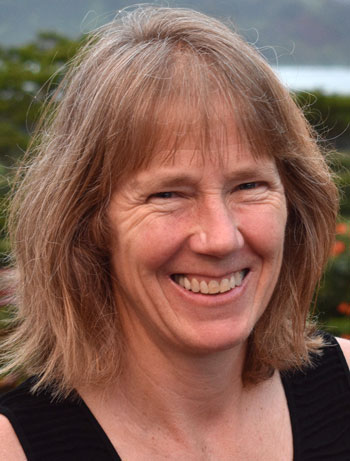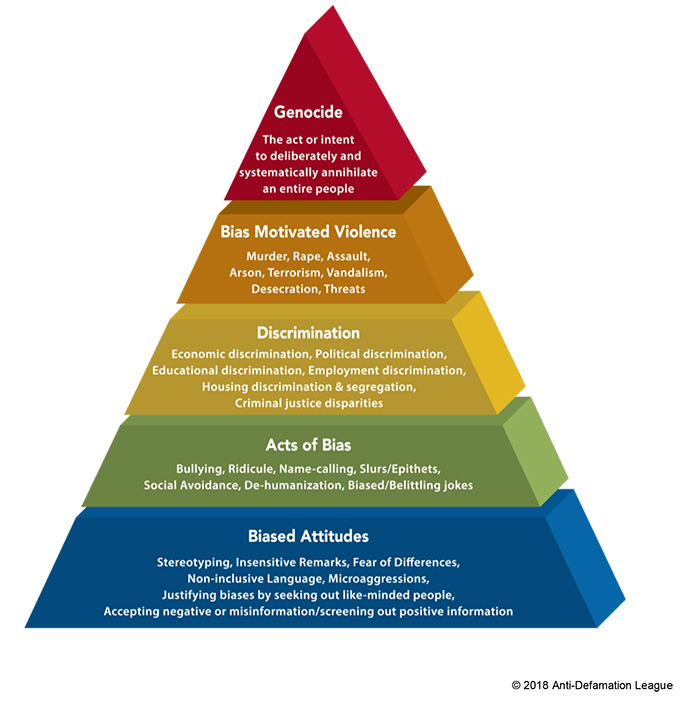Defusing School Bullying Through Peer Leadership |
||||||||
| by Diane DeBella | ||||||||
|
||||||||
Many Vermonters are familiar with the heartbreaking story of 13-year-old Ryan Halligan’s suicide in 2003 while he was a student at Albert D. Lawton Middle School in Essex Junction, Vermont. Ryan had been a victim of bullying and cyberbullying for years at the hands of fellow students who started rumors that he was gay and led him to believe a girl liked him, only to have her humiliate him in front of all of her friends. After his death, Ryan’s parents, John and Kelly, shared their heart-wrenching story with many national news outlets and on their own website, Ryan’s Story, hoping to make a difference for others. In addition, John was instrumental in the passage of the Vermont Bully Prevention Bill (Act 117) in 2004, as well as a bill that requires mandatory suicide prevention education in public schools (Act 114, 2006). John has been sharing Ryan’s story with students since 2005, reaching over 2,000 schools and one million students. When he talks about Ryan, John shares his pain and reminds students that they are loved: “Don’t ever believe for a second that you don’t matter, and that no one would miss you if you were gone. You are loved beyond belief.” He describes the friends of those who bullied his son as bystanders. They could have said something or done something, but they chose not to. Instead, John encourages students to be upstanders: “So I beg you. Don’t be a bystander. Be an upstander. Stand up to your friend” (www.ryanpatrickhalligan.org). In the 15 years since Ryan’s death, what has changed—nationwide and in Vermont—in terms of bullying and cyberbullying? Have we made any progress at all?
Over 3.2 million students in the United States are victims of bullying each year, and approximately 160,000 teens skip school every day because of bullying. A shocking 90 percent of fourth through eighth graders report being victims of bullying (www.dosomething.org). As more and more children and teens have access to phones and tablets, cyberbullying has become increasingly problematic. Before the advent of the Internet and social media, victims could find respite once school was over for the day. Today, that is no longer true, as some targeted students are relentlessly tormented 24/7 by students harassing them via social media and text messages. Students feel there is no escaping the abuse. According to Pacer’s National Bullying Prevention Center (www.pacer.org), the percentage of students who have experienced cyberbullying at some point in their lives has nearly doubled, jumping from 18 to 34 percent between 2007 and 2016. And 90 percent of teens who report being cyberbullied have also been bullied offline. Harassment of students of color, people who have disabilities, and those who identify or are perceived as LGBTQ has also continued to rise, according to the National School Climate Survey (www.glsen.org/article/2017-national-school-climate-survey-1). The short- and long-term effects of bullying are staggering. Victims of bullying often suffer from poor school adjustment; they also have difficulty sleeping and suffer from anxiety and depression. They are twice as likely to experience headaches and stomachaches, and if victims self-blame, they are at an even greater risk for negative outcomes. There remains a strong correlation between bullying and suicide, although this relationship can be mediated by depression, violent behavior, and substance abuse. Students facing peer victimization are 2.2 times more likely to have suicide ideation and 2.6 times more likely to attempt suicide than students not facing victimization (www.pacer.org).
Vermont continues to assess its response to bullying, cyberbullying, and harassment. There are numerous statutes on the books addressing harassment, hazing, and bullying. In 2012, the secretary of education established the Harassment, Hazing, and Bullying Prevention Advisory Council “to provide advice and recommendations on harassment, hazing, and bullying prevention strategies and resources, and to coordinate statewide activities related to the prevention of and response to harassment, hazing, and bullying.” In 2015, Vermont combined its harassment, hazing, and bullying model policies into one single model policy, making it easier for school leaders and designated reporters to appropriately address allegations.
In January 2018 then representative Kiah Morris (D-Bennington) introduced H.794, which proposed, in the language of the bill, to “require the Agency of Education to adopt ethnic studies standards into statewide educational standards, and the Vermont School Board Association to develop a model policy on ethnic and social equity in schools” for public schools and approved independent schools and to “establish the Ethnic and Social Equity Standards Advisory Board to assist the Agency of Education in developing the ethnic studies standards.” The bill seeks to promote critical thinking regarding ethnic and social groups and to expand the curriculum so that students can explore issues of identity, racial equality, and racism—a move that could reduce bullying by raising awareness and appreciation of others from different backgrounds. According to the Vermont Coalition for Ethnic and Social Equity in Schools (VCESES), a coalition of Vermont residents who firmly believe that diverse ethnic and social groups need to be accurately represented in the Vermont Education system from pre-Kindergarten to 12th grade, H.794 has been added to S.257 Misc education bill and has passed unanimously out of the education committee; it is now with the committee on Human Services, which is working on other parts of the bill (ethnicstudiesvt.org). Ironically, Morris was forced to resign in late September due to racially charged threats and harassment directed toward her and her family—clear evidence that Vermont continues to struggle with issues of bullying and harassment.
Kathy Johnson, a senior training consultant with the ADL and cofounder and partner of CQ Strategies, LLC, has been providing peer leader training in Vermont middle and high schools for 18 years: “This program has student leadership at its core. I’ve seen students of all types and from all different groups in schools step up to become leaders. They learn to speak in front of groups. They go into classes and advisories to lead games and activities and discussions with their peers, on topics that many adults find hard to talk about. When given the time and opportunity—and skill development—these young people are amazing at helping each other. Students who work together can do a lot to reduce bullying. They can’t do it alone, of course. Adult support is critical.”
Participating in the Peer Leader Program has also helped Anderson learn more about herself: “I have a much better understanding of controversies; a lot of things that I don’t see as issues really are issues, and that makes me look at things differently. I’m a much kinder person. There is a difference between giving someone respect because you think you should and giving someone respect because you really do respect them. It’s about kindness and being a lot more aware.” The pyramid of hate is one learning tool used in the Peer Training Program. This visual allows students to see how easily bias can escalate to prejudice, discrimination, and ultimately violence. The pyramid can also be used to explain the current state of the country; bullying isn’t limited to children or schools.
According to Anderson, “The way that the world is today, it’s so important for kids to start learning early on how to properly speak about personal things—respectfully. We can learn how to be united and respectful of each other despite our differences. It’s really about understanding. We may have different views that we are passionate about, and it’s important that the kids who represent the future are learning how to interact respectfully now.” The ADL’s antibullying efforts stretch across New England. In addition to A World of Difference Institute, the annual ADL New England Youth Congress is a one-day conference for over 1,400 middle and high school students, teachers, and community leaders from over 65 schools, who come together to learn, inspire, and share their voices of leadership. ADL’s goal is to challenge all forms of prejudice and actively promote respect for individual differences. Since its inception, ADL’s Peer Training Program has been implemented in 125 schools, training 16,000 students who have impacted over 500,000 lives (newengland.adl.org).
In addition to A World of Difference Institute, other antibullying and antiviolence efforts taking place in Vermont include the Vermont Association of Middle Level Educators (VAMLE). Each March VAMLE holds a conference, Beyond Bullying: Creating a Culture of Respect in Learning Environments, that brings together teams of middle-level students and educators from across Vermont. The goal of the conference is to develop student leadership in planning for school change. Along with presentations by educators, there are sessions led by students, who get the experience of being empowered to be leaders, which they can then take back and model at their schools. From the perspective of one student leader, “If you see another student around your age presenting and getting involved, you’ll feel that you’re able to take action, which is what we’re all about.” Numerous workshops are designed to help students and educators develop effective strategies to bring back to their schools. According to board executive director Sue Gee, “The whole concept of building a culture of a respectful learning environment is really what the conference is about.” Vermont is stepping up to address bullying and harassment from a number of different vantage points. Yet gaps remain. To fill those gaps, the state must make a dedicated effort. According to Johnson, “We need more schools to work with students in empowering ways to put student voices first with strong adult guidance. As a state we need to put some dedicated effort toward giving students opportunities to take leadership roles in building strong, safe, respectful cultures. It’s a systemic approach that is needed. There is the student leadership piece, as well as the adult education piece. Kids need to understand the big picture. There’s so much pressure on schools—budget pressure, time pressure, deficiencies in the social safety net. Many kids are coming to school with difficult life circumstances—trauma, economic insecurity, food insecurity. It’s a lot of pressure. The social emotional piece, finding ways to invite student leadership, is key. Building student leaders who feel empowered to have a positive impact on their social environment is one of the best gifts we can give to young people.” Have we made progress since the tragedy of Ryan Halligan’s death? Absolutely. Yet there is still more to do to ensure that no child is left without hope.
|
||||||||
|
Diane DeBella has spent over 20 years examining women’s issues as a writer, teacher, and speaker. www.iamsubject.com.
|
|||||||





